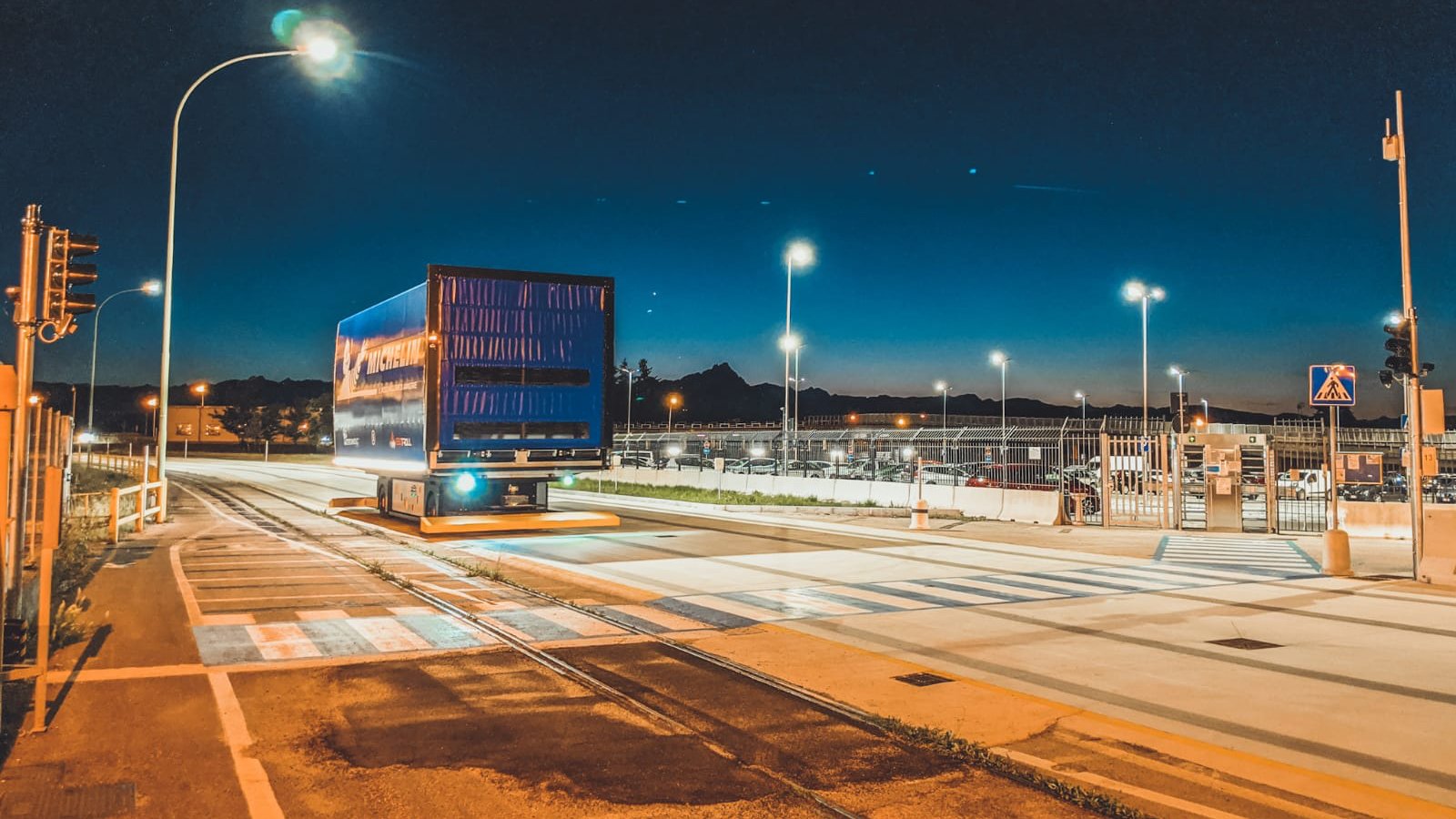Day or night, come rain or shine, the shuttle vehicles at the Michelin plant in Cuneo come and go non-stop. These six autonomously guided vehicles (AGVs), each the size of a truck and fitted with electric motors, travel non-stop, 24/7, traversing the 1,500 meters that separate the production area and the storage warehouse. They are following loading and unloading instructions issued directly from the Rockwell Automation Level 2 supervision system.
Looking like a giant reproduction of a child’s remote-controlled cars, they fascinate anyone walking along the flyover that overlooks the plant. But this is not a giant game; it’s an innovative project currently unequalled anywhere in the world – and it has been created for Michelin by Giordano&C. in collaboration with Rockwell Automation. It’s an example of excellence in the application of the most advanced technologies, in support of digital transformation and Industry 4.0. Its implementation has allowed Michelin to gain important benefits in terms of sustainability, safety, efficiency and – last but not least – operating costs. The project is highly customizable and, therefore, adaptable for any company that needs to handle large loads outdoors. This project has generated a lot of interest around its duplication at other Michelin production sites, and its implementation at important Italian industrial companies operating in the food & beverage and pharmaceutical sectors is already being evaluated.
As often happens in these cases, everything started from a specific need expressed by the customer. Michelin, a company that has always been characterized by a strong commitment to innovation and an excellent factory model, wanted to optimize the transportation system and the loading and unloading of finished products at its Cuneo plant. This required the introduction of a new load-handling system that would replace the trucks used to transfer tires from the end of the production area to the logistics center, as well as the driver-operated forklift that physically entered and exited the body of the truck to perform loading and unloading operations.
Unable to use traditional handling systems due to the configuration of the plant, Michelin asked several suppliers to propose alternative solutions. The requirement to operate outdoors and cover a distance of 1,500 meters added complexity even for the most experienced suppliers. It was essential to think outside the box and use the same approach adopted in brown-field plants where you start with whatever is available and make the most of everything at your disposal. This was exactly the way that Giordano&C., an Italian company established in 1924 and today a well-known global system integrator, took on the challenge, unintimidated by the construction work required to create a transit infrastructure for the shuttles and involving Esatroll for the supply of vehicles with specific characteristics. Giordano&C. then turned to Rockwell Automation, a company they have been working with for a long time, supported by the fact that they are a Rockwell Automation OEM Gold Partner. In order to control the shuttles, it was crucial to integrate the AGV system with the level 2 communication system that Rockwell Automation uses as a standard in the Michelin plants.
At first glance, a simple outsourcing of warehouse logistics managed with AGVs may come to mind. In reality, there are some peculiarities that are not usually found with other similar projects. First of all, the great distance between the production and logistic areas required significant construction work. Unlike an AGV designed for indoor use, these shuttles have mechanical characteristics that make them similar to a truck running on the road and, therefore, are equipped with axles, wheels, chassis, etc. Another element of differentiation is represented by the software, as these vehicles include a navigation system that allows them to operate under any weather conditions. In addition, the navigation control system is connected via Rockwell Automation Level 2 communication, which means that the shuttles function according to the orders they receive directly from the central system. All the control panels of the loading and unloading bays, as well as all the interfaces between the level 2 system of the plant and the fleet, are managed by technologies from Rockwell Automation, and this enables connection between the production and the transportation areas of the factory. Once production is complete, Level 2 communicates that there is material to be loaded at the bay at the end of production area and to be unloaded at another specific bay of the logistics pole, following the rules specified by the customer and integrated by Giordano&C. in the navigation system. Once the operation is complete, information is sent to the Level 2 system so that Michelin always knows the number of pallets in stock.
By using advanced digital technologies, Michelin has been able to reduce annual CO2 emissions by 50 tons and, specifically, the choice of using shuttles with electric motors whose batteries are recharged during loading and unloading phases has made it possible to achieve a target of zero emissions. Another feature of interest is the global increase of safety in the workplace, also from the point of view of communications. Wireless gateway technology provided by ProSoft Technology, a Silver Technology Partner of Rockwell Automation, allows the easy and safe transfer of information between the fleet and the Level 2 System, via CIP Safety protocol. Just as interesting is the speed at which production and logistics information can be exchanged thanks to real-time processing and communication with the Rockwell Automation Level 2 system, which allows Michelin to have a global view of production and stock materials at all times.

